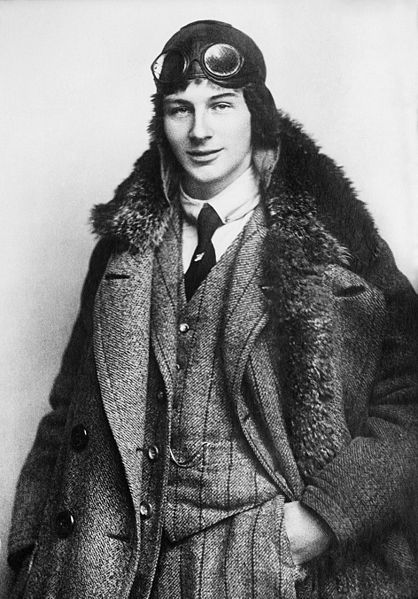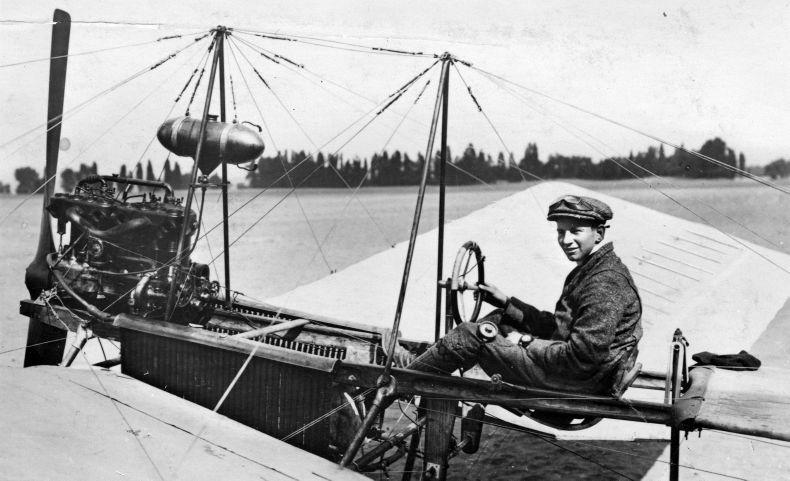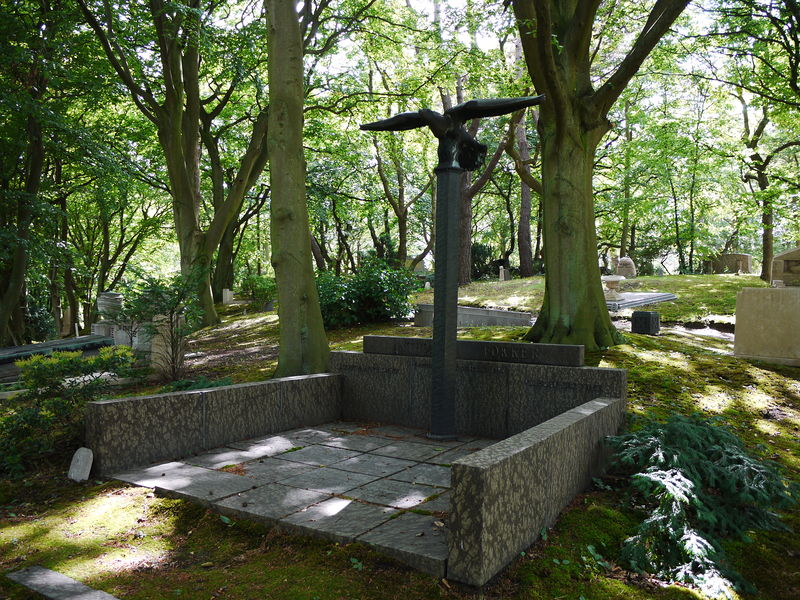<Back to Index>
- Aviation Pioneer Anton Herman Gerard "Anthony" Fokker, 1890
- Composer Johann Kuhnau, 1660
- Dictator of Bolivia Alfredo Ovando Candía, 1918
PAGE SPONSOR


Anton Herman Gerard "Anthony" Fokker (6 April 1890 – 23 December 1939) was a pioneer in aviation and a Dutch aircraft manufacturer.
Anthony (Tony) Fokker was born in Blitar (then Dutch East Indies, now Indonesia), son of Herman Fokker, a Dutch coffee plantation owner. Some sources say that he was born in Kediri.
At that time, Blitar was a part of so-called Kediri Residency, a
colonial era administrative division whose capital was in Kediri. Four years later, the family returned to the Netherlands and settled in Haarlem in
order to provide Fokker and his older sister, Toos, with a Dutch
upbringing. Although he was not studious and Fokker did not complete
his high school education, he showed an early interest in mechanics,
and rather played with model trains and steam engines. He devised a
leak proof tire but this was not an original invention and was already
patented. Fokker's first interest in flight stemmed from Wilbur Wright's exhibition flights in France in the summer and fall of 1908. In 1910, aged 20, Fokker was sent by his father to Germany to receive training as an automobile mechanic at Bingen Technical school, but his interest was in flying, so he transferred to the Erste deutsche Automobole - Fachschule in Mainz. That same year Fokker built his first aircraft "de Spin" ("the Spider"), which was destroyed by his business partner who flew it into a tree. He gained his pilot license in his second "Spin" aircraft. In his own country, he became a celebrity by flying around the tower of the Sint - Bavokerk in Haarlem on 31 August 1911, with the third version of the "Spin". He also added to his fame by flying on the birthday of Queen Wilhelmina. In 1912, Fokker moved to Johannisthal near Berlin where he founded his first own company, Fokker Aeroplanbau. In the following years he constructed a variety of airplanes. He relocated his factory to Schwerin where it was renamed Fokker Flugzeugwerke GmbH, and later shortened to Fokker Werke GmbH. At the outbreak of World War I the
German government took control of the factory. Fokker remained as
director and designed many aircraft for the Imperial German Army Air
Service (Luftstreitkräfte), including the Fokker Eindecker and the Fokker Dr.I, the triplane made famous in the hands of aces such as Manfred von Richthofen (the Red Baron). In all, his company delivered about 700 military planes to the German air force. Fokker himself appears to have been an accomplished pilot, demonstrating his aircraft on numerous occasions. On 13 June 1915, Fokker demonstrated the new Fokker Eindecker at Stenay in the German 5th Army Sector in front of the German Crown Prince and other VIPs. Fokker worked closely with an accomplished military pilot, Otto Parschau, to bring the Eindecker into military use and on this occasion both men demonstrated the aircraft. Max Immelmann, later to become a high scoring Flying Ace with the Eindecker, commented in a letter written shortly after this event on 25 June 1915 that: The
Kaiserlich Aero Club Membership List for 1918, lists Hackstetter, Karl,
Regierungsbaumeister a.D., Direktor der Fokker - Werke, Schwerin i. M.,
Friedrich - Franz - Str. 90. Fokker is often credited with having invented the synchronisation device which enabled World War I aircraft to fire through the spinning propeller.
His role was certainly significant but there were a number of prior
developments before the result was achieved for which Fokker is rightly
credited. The famous French pilot, Roland Garros,
was shot down on 18 April 1915. His aircraft had been fitted with a
deflector device, whereby metal deflector wedges were fitted to the
airscrew. Garros was able to set fire to the airframe before being
taken prisoner but the aircraft's gun and the armoured propeller
remained intact and came into German hands. This initiated a phase of consideration of the interrupter gear concept in the Imperial German Army Air Service (Luftstreitkräfte).
Fokker was heavily involved in this process but the story of his
conception, development and installation of a synchronisation device in
a period of 48 hours (first found in an authorised biography of Fokker
written in 1929) has been shown to be not factual. The available
evidence points to a synchronisation device having been in development
with Fokker's company for perhaps six months prior to the capture of
Garros' machine. However the final result of the development was Fokker's pushrod control mechanism, Gestängesteuerung, which allowed the aircraft's forward firing machine gun to fire only when the propeller was out of the line of fire. As incorporated into the famous Fokker Eindecker its use directly led to a phase of German air superiority known as the Fokker Scourge. After the war's end, the terms of the Treaty of Versailles forbade Germany to build any aircraft or aircraft engines. In 1919 Fokker returned to the Netherlands and started a new aircraft company, the Nederlandse Vliegtuigenfabriek (Dutch Aircraft Factory), predecessor to the Fokker Aircraft Company.
Despite the strict disarmament conditions in the Treaty, Fokker did not
return home empty handed: he managed to smuggle an entire train's worth
of D.VII and C.I military
planes and spare parts across the German - Dutch border. This initial
stock enabled him to quickly set up shop, but his focus shifted from
military to civil aircraft such as the very successful Fokker F.VII trimotor. On 25 March 1919, Fokker married Sophie Marie Elisabeth von Morgen in Haarlem. This marriage lasted four years. In 1922, Fokker moved to the United States and later became an American citizen. Here he established the American branch of his company, the Atlantic Aircraft Corporation. In 1927, Fokker married Violet Austman in New York City. Austman died mysteriously from a fall from their hotel suite on 8 February 1929. Fokker died in New York in 1939 from pneumococcal meningitis. He had been ill for three weeks, and was 49 years old. In 1940, his ashes were brought to Westerveld Cemetery in Driehuis, where they were buried in the family grave.
Fokker's nickname was The Flying Dutchman. In popular media, Hurd Hatfield portrayed him in the 1971 film Von Richthofen and Brown and the character Roy Fokker from the animated series Robotech was named in honor of Anthony Fokker. Fokker is portrayed by Craig Kelly in the Young Indiana Jones Chronicles: Attack of the Hawkmen.
“ Fokker, especially, amazed us with his skill. ”
